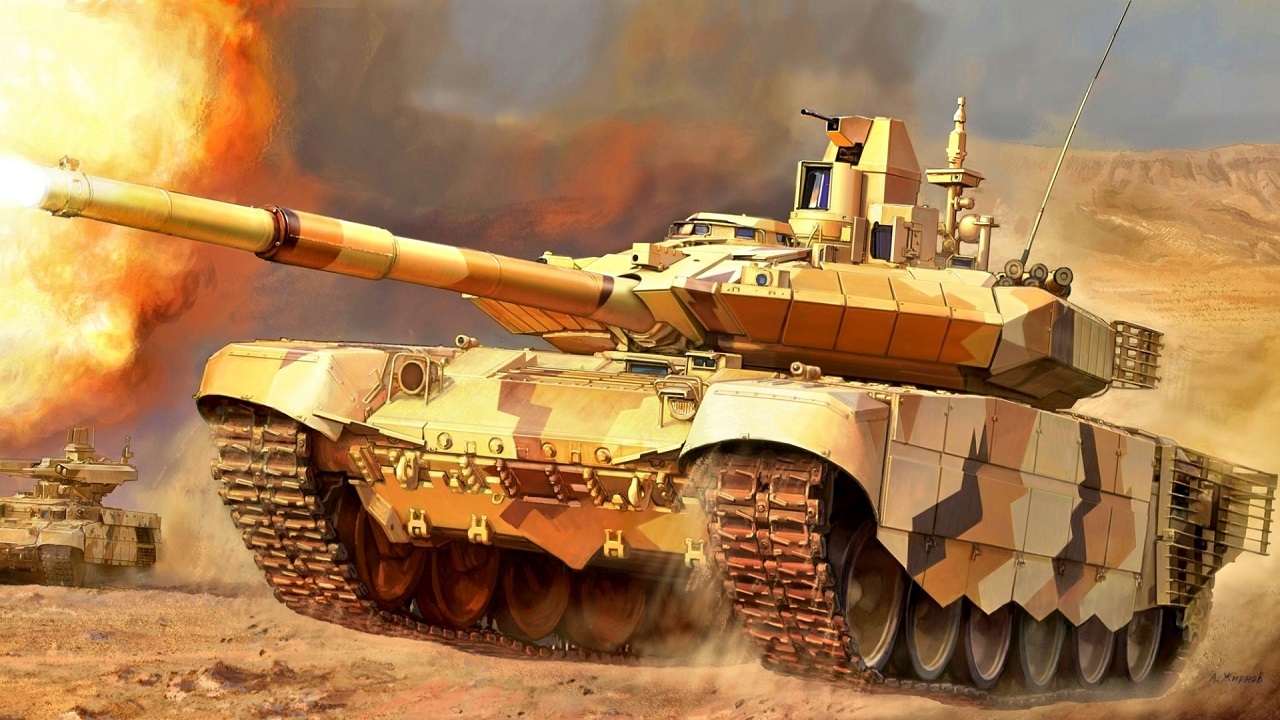Russia has been forced to rely on antiquated weapons systems in Ukraine. This is because for 14 months, Moscow has suffered extreme losses in personnel, material and equipment, draining its stockpiles across the board. Perhaps the most staggering losses Moscow has suffered are of its main battle tanks. In February, the International Institute for Strategic Studies estimated that Russia was down 2,000 tanks — more than half of its operational fleet.
In the early months of the invasion, Moscow relied more heavily on its more modern MBTs, including the T-72B3, T-72B3M and T-80BV/U variants. Industry experts believe that nearly two-thirds of these top-of-the-line armored vehicles have been lost.
Without its premiere tanks in surplus, Moscow’s armored corps turned to the Soviet-era T-62.
Introducing the T-62 MBT
When footage began to circulate this summer of dozens of retired T-62s being delivered to Ukraine, the true state of Russia’s MBT arsenal came into sharp focus. The UK’s Defense Ministry was first to verify the incorporation of these aging armored vehicles in Ukraine, stating that “as a result of losses during hostilities, the Russian enemy was forced to withdraw from storage T-62 tanks to recruit reserve battalion tactical groups that are being formed to be sent to Ukraine. In addition, equipment that was damaged and restored at repair and renovation plant is used to replenish the loss of weapons and military equipment.”
The T-62 was introduced into service in the early 1960s and quickly became the standard tank for the USSR, as it replaced the T-55 MBT. Perhaps the most significant advancement the T-62 featured was the unique positioning of its main gun and machine gun, which were mounted coaxially.
The T-62s delivered to Ukraine do sport several enhancements from their predecessors. According to The Drive, the T-62s in Ukraine are fitted with a raised slat or cage armor to help defend against anti-tank missiles.
What Happened to Moscow’s More Advanced Tanks?
The Kremlin often boasted that its new and formidable T-80 MBTs could blow adversarial tanks out of the water. Yet the sheer number of these variants lost in Ukraine suggests otherwise. The influx of advanced Western weapons into Ukraine, including anti-tank weapons like the U.S. FGM-148 Javelin, British NLAW, and Swedish AT4, have certainly aided the country’s defensive efforts.
There are further problems for Russian tanks and their operators. According to an Oryx report, roughly 34% of the country’s tank losses were actually due to abandonment by crew members. Ill-equipped and unprepared for battle, many Russian troops simply left their MBTS behind.
Moscow also lacks the resources and funds to adequately maintain and upgrade its fleet of tanks. According to Newsweek, “the Russian army’s ability to sustain their own equipment in the field is dismal. Tanks break down more under combat conditions, and we’re seen lots of photographs of Russian tank ‘dumps’ found by Ukraine after advancing where disabled tanks sat unrepaired in the dozens. So not only are their combat losses very serious, they are unable to get tanks back into action that suffer mechanical breakdowns in the field.”
While both Moscow and Kyiv have provided different tank-loss estimations, they undoubtedly exaggerate numbers to support their respective propaganda efforts. Therefore, it is extremely challenging to garner exact equipment-loss estimates.
MORE: Something Is Wrong With Kamala Harris
MORE: Video – Ukraine Has Massive New NATO ‘Cannon’ Ready To Fight Russia
MORE: ‘Americans Will Pay The Price’: One Democrat Is Angry At Joe Biden
MORE: Could Joe Biden Get Impeached?
Maya Carlin, a Senior Editor for 19FortyFive, is an analyst with the Center for Security Policy and a former Anna Sobol Levy Fellow at IDC Herzliya in Israel. She has by-lines in many publications, including The National Interest, Jerusalem Post, and Times of Israel. You can follow her on Twitter: @MayaCarlin.

